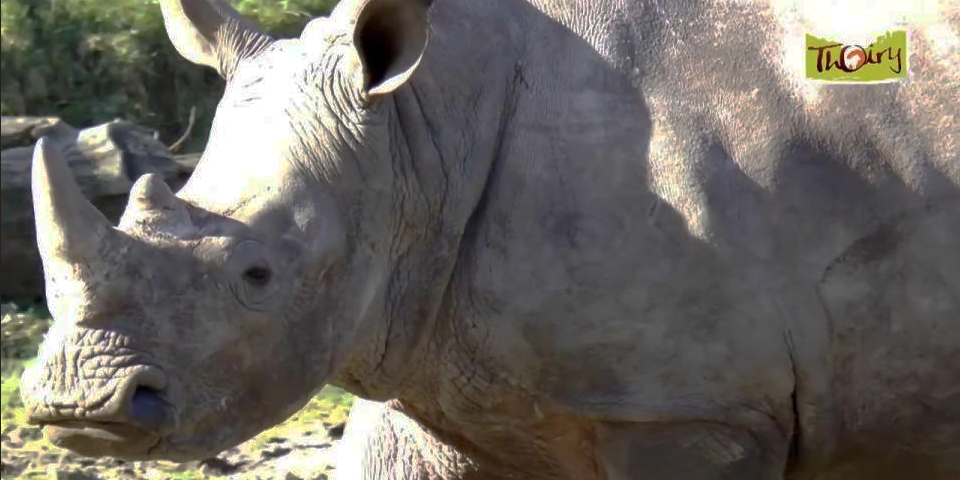A rhinoceros at a zoo near Paris was shot three times in the head on Monday night by poachers who then cut off its horn with a chainsaw. The four-year-old rhinoceros, named Vince, was found dead this morning by keepers at Thoiry Zoo, to the west of the French capital.

Vince (pictured here) was shot 3 times in the head at a Paris Zoo today
One or more poachers are believed to have broken in to the zoo and forced their way into an enclosure where three rhinos lived. The white rhinoceros second horn had also been partially hacked off, indicating the perpetrators had run out of time or their equipment had failed. They may have also planned to steal the horns of the two other white rhinos, five-year-old Bruno and 37-year-old Gracie. Both animals are said to be safe and healthy.
Vince was born on in September 2012 at Burgers’ Zoo in the Netherlands. He arrived in Paris in March 2015 with Bruno. Rhinoceros horns can be sold on the black market for around US$30,000 each and are particularly sought after in China, where they are believed to have aphrodisiac qualities.
This is thought to be the first time in Europe a live animal living in captivity has been killed by poachers. The theft of ivory horns usually takes place at auction houses or other exhibitions. An enquiry has been launched into Vince’s death but it is not yet known what kind of gun was used to kill him. The attack took place despite security cameras and five members of zoo staff living on the site.
The white rhinoceros is the second largest land mammal after the elephant. The species was once on the brink of extinction but there are now around 20,000 in the world, despite the continued threat of poaching
“Animal parks throughout Europe have been put on alert to look out… to get into these places they have to climb 3.5 metre fences, go through padlocked doors. It’s not easy to kill a rhino weighing several tonnes just like that. It’s a job for professionals.”
The white rhino is an endangered species, with an estimated 21,000 remaining in the wild across the world, mainly in South Africa and Uganda. Their horns are sought after in Asia, where they are valued for their supposed aphrodisiac qualities.

